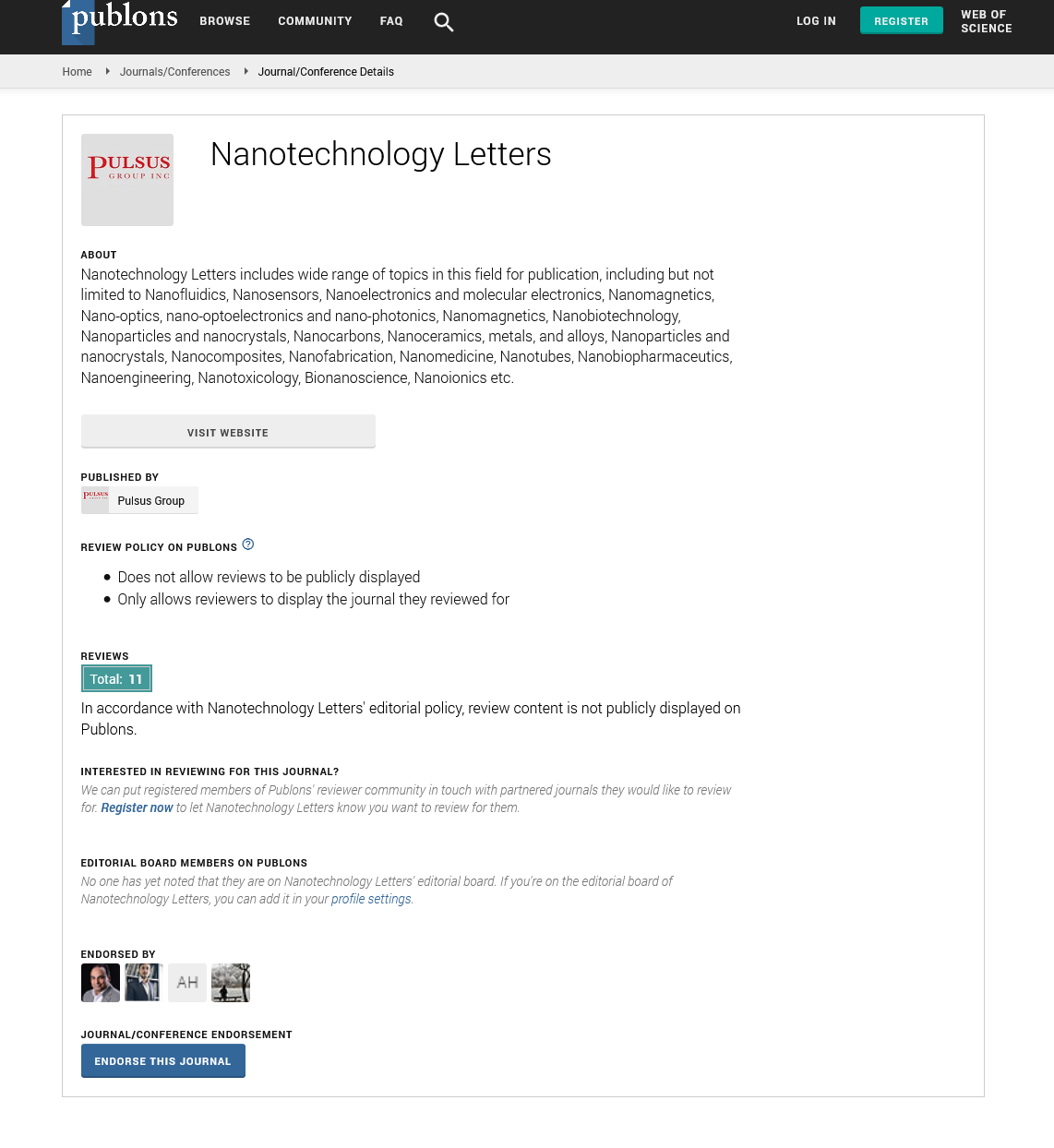The element of nano magnets and nanomagnetic domains
Received: 08-Sep-2021 Accepted Date: Sep 22, 2021; Published: 29-Sep-2021
Citation: Guk-Cho D. The element of nano magnets and nanomagnetic domains. Nanotechnol Lett 2021;6(1): 1.
This open-access article is distributed under the terms of the Creative Commons Attribution Non-Commercial License (CC BY-NC) (http://creativecommons.org/licenses/by-nc/4.0/), which permits reuse, distribution and reproduction of the article, provided that the original work is properly cited and the reuse is restricted to noncommercial purposes. For commercial reuse, contact reprints@pulsus.com
Description
A Nano magnet is a sub micrometric system that presents spontaneous magnetic order called magnetization at zero applied magnetic fields which is also called as remanence. The small size of nanomagnets prevents the formation of magnetic domains. Nanomagnets can be used to treat cancer as well as heart disease and I also found nanomagnets significant as I feel they can help progress in the fundamental aspects of medicine, such as manipulating stem cells. The nano-scientists created the world's smallest magnet that's an atom, it is sort of a magnet during a refrigerator and this magnet features a north and south pole, but consists of only one atom of the element known as holmium. Magnetism is caused by the motion of electric charges. Each atom has electrons, particles that carry electric charges. The electrons circle the nucleus, Spinning like tops, or core, of an atom. Their movement generates an electric current and causes each electron to act like a microscopic magnet. The force of a magnet towards North Pole is closer to the lines and stronger the magnetic field so the magnetic field from a bar magnet is strongest closest to the poles and the lines have arrowheads to show the direction of the force exerted by a magnetic north pole.
The strongest permanent magnets within the world are neodymium magnets; they're made up of magnetic material made up of an alloy of neodymium, iron and boron to make the Nd2Fe14B structure. Neodymium may be a rare-earth metal, and it's also ferromagnetic. It means; that like iron, neodymium are often magnetized. It is so strong because it's a really high state of saturation, magnetization. So, the magnetic energy the mixture of neodymium, iron, and boron can store makes the alloy very magnetic. This super magnet features a magnetic flux of 44.14 Teslas, and that we can say that its 900 thousand-fold that of the world and quite 9 times that of a closed resonance equipment that we discover during a hospital. Neodymium magnets also are referred to as super magnets. A well-deserved name indeed, as they need extraordinary strength even at their smallest size and are among the strongest permanent magnets within the world. Magnets can be too small and thermally stable magnetic particles with magnetic properties comparable to some rare earth magnets, the strongest permanent magnets ever created. These tiny magnets are as small as 5 nanometers, a million times smaller than an ant.Magnets can effect by its size, but only because the size of a magnet means there are proportionally more domains which will align and produce a stronger magnetic flux than a smaller piece of an equivalent material.
The most magnetic material in nature is the mineral magnetite and it also called as lodestone .The magnetic domains of magnetite naturally align with Earth's axis. The largest magnet on Earth is, in fact, the Earth. Our planet acts like one big bar magnet, with a magnetic north and South Pole.
Uses of electromagnets
Electromagnets found anywhere and have many uses. A common and really simple example of an electromagnet, specifically a solenoid, may be a speaker. The varying current through the speaker causes the strength of the solenoidal magnetic flux to extend and reduce. As this happens, another magnet, specifically a static magnet, is placed at one end of the solenoid and against a vibrating surface. As the two magnetic fields attract and repel thanks to the changing solenoidal field, the vibrating surface is pulled and pushed creating sound. Better quality speakers use high-quality solenoids, permanent magnets, and vibrating surfaces to make higher quality sound output.






